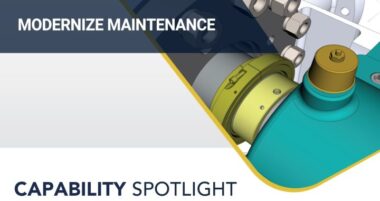Author: Kamran Mirza
The very definition of the word “progress” describes the process of how something can develop or improve over time. New engineers in the pump industry today would be shocked at how much progress has been made over the years, how technology has advanced – from pump designs and manufacturing processes to the availability of advanced raw materials and their capability to meet end users’ needs. Having started my career back in the 1970’s, I remember the “old” way things were done, and I am happy to have the opportunity to share some history about the pump world and some of the evolutionary stages in which I have personally witnessed and participated.
Throughout my career, I have worked with progressive cavity pumps – the design of which was initially intended to operate as a compressor for use in aviation. When the French engineer and inventor, René Moineau, created the progressive cavity principle in the early 1930’’s, and built the first prototype, it was a major failure. But when the design was applied as a pump concept, the result achieved incredible success. The progressive cavity pump design utilizes a single helical rotor, which turns inside a double helix stator, thereby creating cavities which progress from the suction end to the discharge end. Seal lines are created as a result of the compression fit between the stator and the rotor, and this keeps the cavities separate as the pumped material moves through the pump with each rotation.
This offers an advantage over other types of pumps because progressive cavity pumps can handle any combination of liquids, solids, and gases. Most pumps are designed to pump liquid and cannot handle gases and solids. Gas pockets or sudden surges to all liquid moving through different types of pumps will stall or seriously damage the pump, and solids can block the flow of fluid as well as cause abrasive wear to the internal components. So in this way, progressive cavity pumps offer a big advantage over other types of pumps. Their design offers additional benefits in that these pumps are self-priming, are designed for constant flow and pressure stability, require less energy to function, and operate at a very high volumetric efficiency.
Progressive cavity pumps have been proven effective for use in a variety of applications and in a range of industries, but like many other pumps, it took decades for end users to truly have well manufactured pumps actually operating in their facilities. Between the 1930’s and 60’s, several European and American companies who gained manufacturing rights to Moineau’s progressive cavity pump design took different approaches on how to manufacture this type of pump. Unfortunately, none of them were very precise or highly efficient – mainly because the manufacturing technology for producing such complex mathematical shapes was not yet available to the level of precision that was really required. The design engineers, who had very efficient and optimal designs, were forced to modify their designs specifically to suit the limited capabilities of the manufacturing processes available at that time. I remember in the 70’s, a multiple-shaped profile would take an entire week to produce, using techniques that were slow and imprecise. Today, the same part can be made with great precision in about 40 minutes on a modern whirling/milling machine.
It was really in the 1980’s and 90’s that the manufacturing sector advanced in leaps and bounds. The fact that rotor manufacturing today is at such a high level of efficiency means that it has really become a level playing field for pump manufacturers. Now the issue is who has the better stator materials – materials such as rubbers, plastics, composites, synthetic blended polymers, rubbers, steels, etc. In the coming decade, the companies that will be most successful will be the ones that invest in advanced materials to develop highly engineered pump products to meet customers’ needs. To continue to compete in this industry, pump manufacturers must progress by modifying pump designs and manufacturing pumps with combinations of advanced materials that are now available in the marketplace, but also develop the technology to process these materials. Over the past 30 years, the pump industry has displayed gradual transition when embracing new technologies, but it must become a higher tech industry at a much faster rate than it has in the past in order to meet the demands for current pumping applications.
Embracing technology and making progress is critical because people are depending on it. Pumps provide water, energy, and other life-sustaining resources to communities around the world. The fact is that the evolution of technology and our improvements to our manufacturing processes have truly impacted people globally, especially in underdeveloped countries. Take for example the development of the LifePump, an efficiently-designed progressive cavity pump manufactured by SEEPEX and installed by Design Outreach. This pump has helped thousands of people in Africa gain access to clean water. This is incredibly significant when you realize that re-engineering and precision manufacturing can turn an 85-year old failed compressor concept into a pump product that makes a real difference in peoples’ lives.




Comments